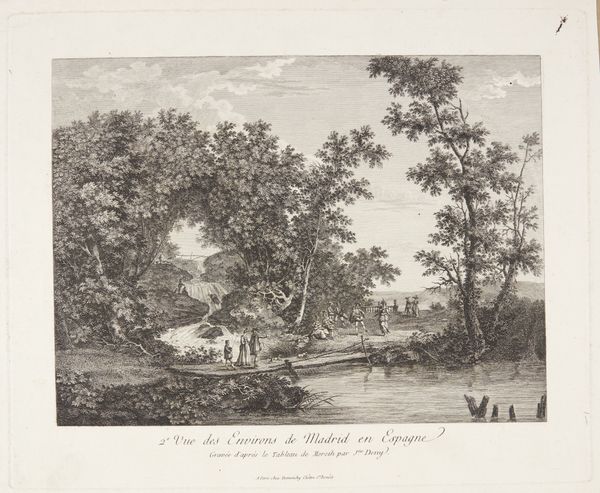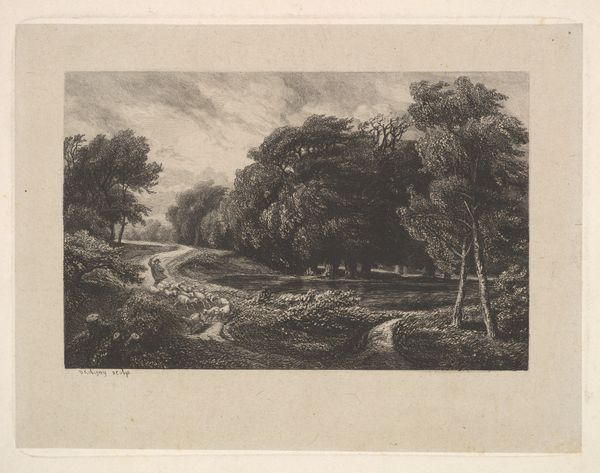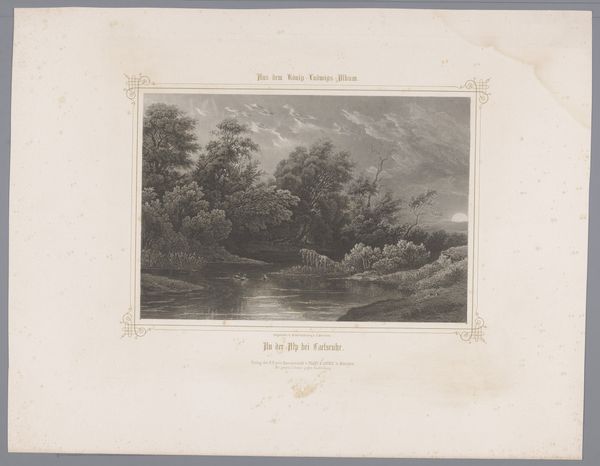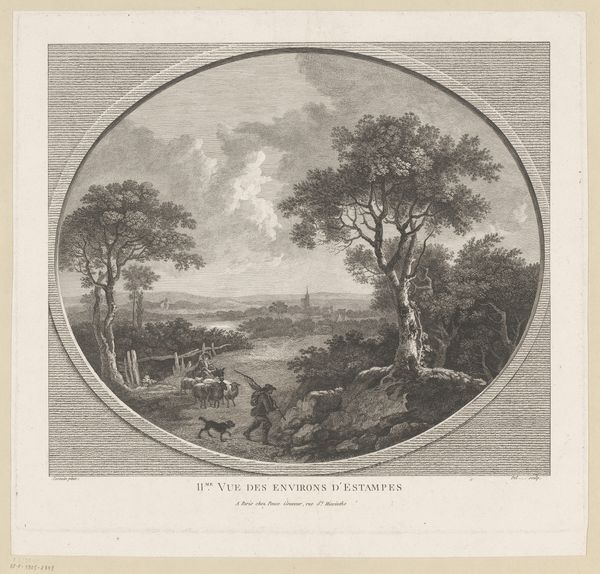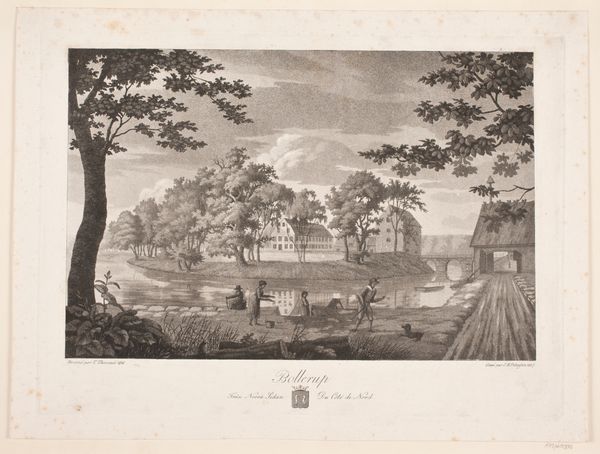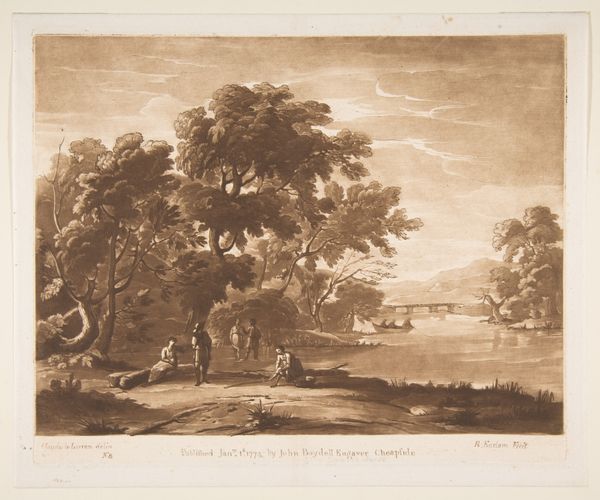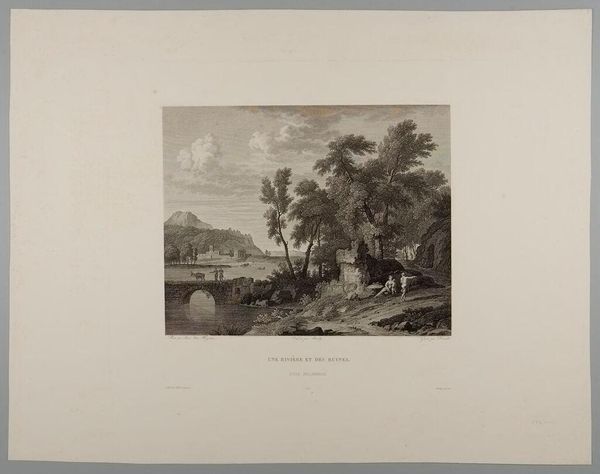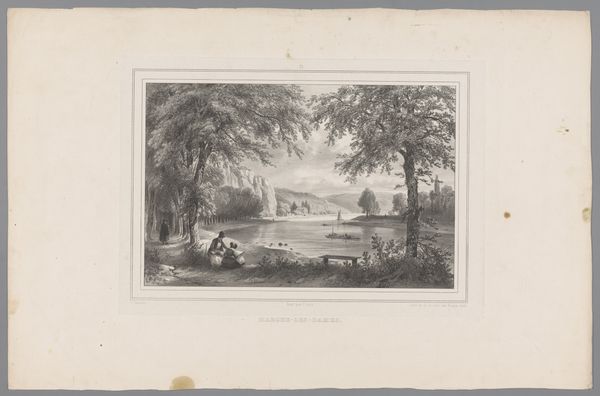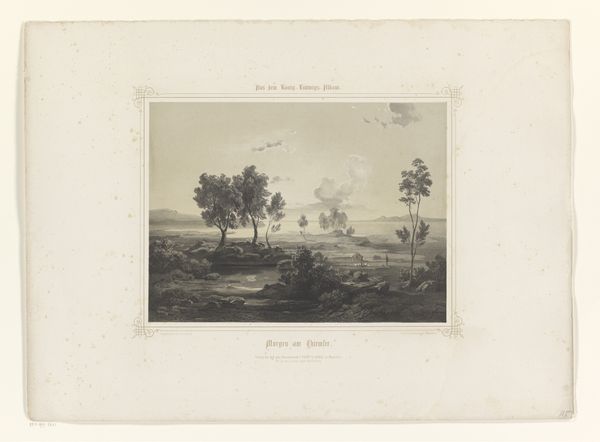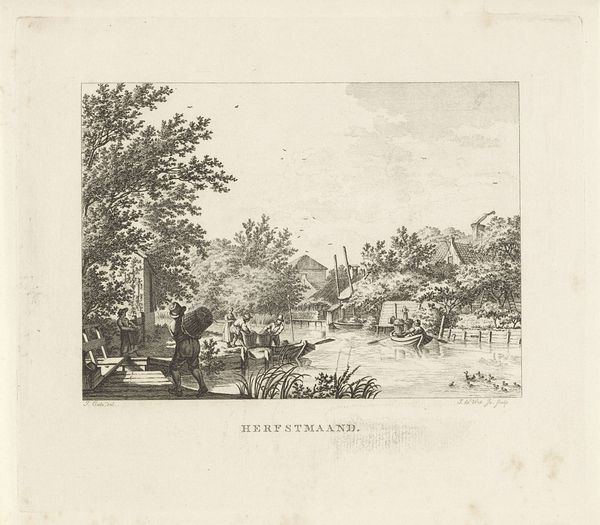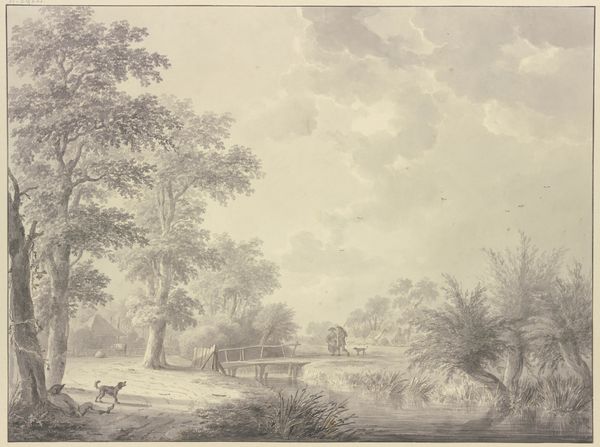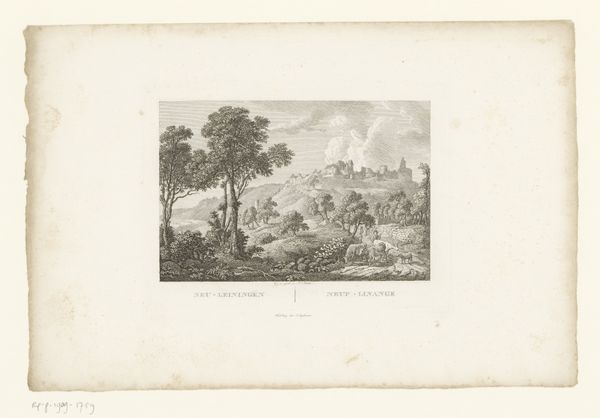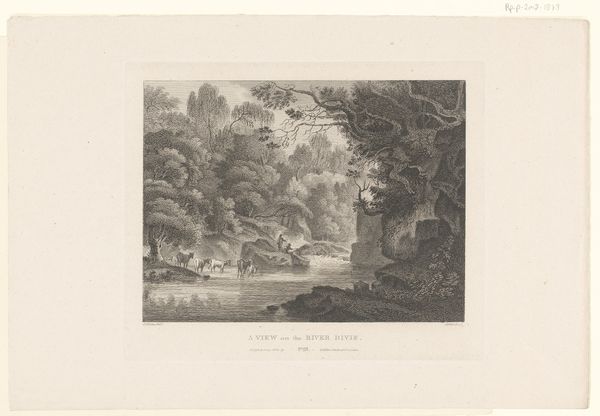
drawing, lithograph, print, etching
#
drawing
#
lithograph
# print
#
etching
#
landscape
#
realism
Dimensions: 288 mm (height) x 400 mm (width) (billedmaal)
Curator: Adolph Kittendorff created "Parti af de pontinske sumpe," or "Part of the Pontine Marshes," sometime in the 1880s. It is currently held at the SMK, the National Gallery of Denmark. Editor: My first thought is: somber beauty. The monochrome rendering lends a melancholic air to the landscape. There's a density created by the dark tones that’s quite powerful. What medium is it? Curator: It’s a combination of drawing, lithograph, etching, and printmaking techniques, allowing for incredible detail and texture. I think that complexity allows him to weave commentary about gender and the social issues related to rural landscapes. Editor: Absolutely. When you consider the environmental context of marshlands—often sites of difficult labor and associated with disease—the labor involved in producing this print becomes fascinating. Think of the specific acids and processes involved in etching; it mirrors the environmental concerns around the marshes. Curator: Precisely! The Pontine Marshes, historically associated with disease and poverty, take on a new significance here. Kittendorff’s choices allow for consideration about class, and perhaps the struggles of rural communities. How does the artist represent the unseen labor that attempts to dominate the land? Editor: And not just struggles! Who owned this landscape, who toiled upon it, and who consumed the products? Even the types of ink and paper used would shed light on production systems of that era. Curator: Right! Think of the communities impacted, specifically how land ownership and labor distribution impacted women. It moves beyond a simple pretty picture. The print participates in complex discussions surrounding land use, ownership, and perhaps colonial aspirations! Editor: This moves beyond a visual experience, then. The making becomes entangled with the marsh’s economic exploitation itself. Looking closely, there's something unsettling and honest here; not your typical romantic landscape. Curator: It demands that we examine our relationship with the natural world. Perhaps it causes viewers to question what beauty costs whom, which I think speaks volumes. Editor: Definitely, this perspective grants richer insights, adding depth beyond surface aesthetics. I’ll leave here contemplating all those interwoven complexities.
Comments
No comments
Be the first to comment and join the conversation on the ultimate creative platform.
